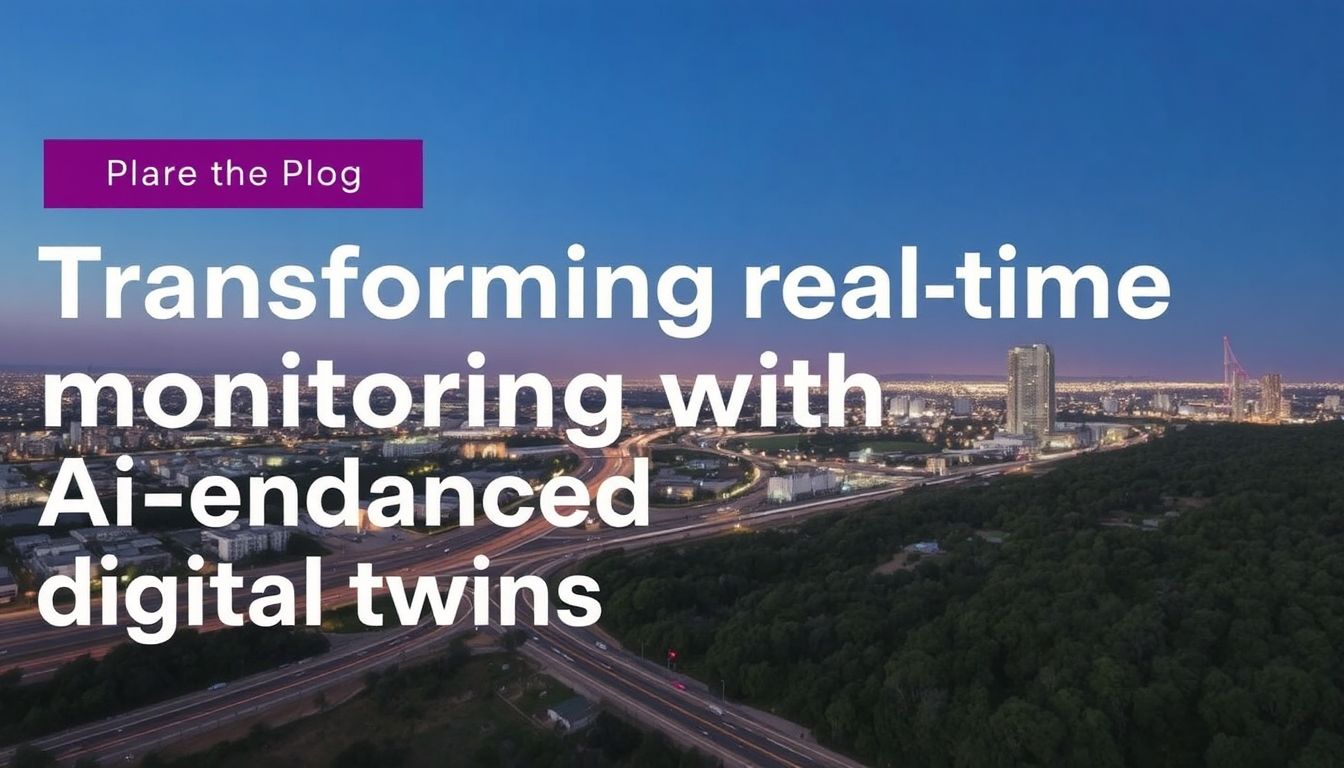
Introduction: The Future of Real-Time Monitoring
Imagine having a crystal ball that not only shows you what’s happening in your systems right now but also predicts potential issues before they occur. That’s the power of AI-enhanced digital twins. These virtual replicas of physical systems are transforming industries by providing real-time insights, predictive analytics, and smarter decision-making tools. In this post, we’ll explore how AI is supercharging digital twins and why this combination is a game-changer for businesses.
What Are Digital Twins?
Digital twins aren’t a new concept—they’ve been around for decades, originally used in aerospace and manufacturing to simulate complex machinery. But today, they’ve evolved far beyond their early applications. A digital twin is essentially a dynamic, real-time digital replica of a physical asset, system, or process. It continuously collects data from sensors, IoT devices, and other sources to mirror the state of its physical counterpart.
How Do Digital Twins Work?
Digital twins rely on three key components:
1. Data Integration: They pull in live data from multiple sources, including sensors, operational logs, and environmental inputs.
2. Real-Time Processing: Using high-speed computing, they analyze this data to detect anomalies, trends, and performance shifts.
3. Simulation & Prediction: They can run "what-if" scenarios to forecast potential outcomes, helping businesses make proactive decisions.
The Role of AI in Enhancing Digital Twins
While digital twins are powerful on their own, integrating artificial intelligence takes their capabilities to the next level. AI brings advanced pattern recognition, predictive modeling, and automation to digital twin technology.
1. Smarter Anomaly Detection
Traditional monitoring systems rely on predefined rules to flag issues. But AI-enhanced digital twins can learn from historical and real-time data to identify subtle anomalies that might otherwise go unnoticed. For example, in a smart factory, an AI-powered digital twin could detect a slight vibration in a machine that indicates impending failure—days before it happens.
2. Predictive Maintenance
One of the biggest advantages of AI in digital twins is predictive maintenance. Instead of waiting for equipment to fail or sticking to rigid maintenance schedules, businesses can use AI to predict when maintenance is actually needed. This reduces downtime and extends the lifespan of critical assets.
3. Natural Language Interaction
Generative AI allows users to interact with digital twins using plain language. Instead of digging through complex dashboards, managers can simply ask, "What’s the most likely failure point in our system this week?" and get an immediate, data-backed answer.
Industries Benefiting from AI-Enhanced Digital Twins
From healthcare to logistics, AI-powered digital twins are making waves across multiple sectors. Here are a few examples:
1. Manufacturing
Factories are using digital twins to optimize production lines, reduce waste, and prevent equipment failures. AI helps simulate different production scenarios to find the most efficient workflows.
2. Healthcare
Hospitals are experimenting with digital twins of patient organs to predict how they’ll respond to treatments. AI enhances these models by analyzing vast amounts of medical data to suggest personalized care plans.
3. Smart Cities
City planners use digital twins to monitor traffic, energy usage, and public safety. AI helps predict congestion, optimize energy grids, and even simulate emergency responses.
4. Energy & Utilities
Power plants and grid operators rely on digital twins to balance supply and demand. AI improves forecasting accuracy, helping prevent blackouts and integrate renewable energy sources more effectively.
Challenges and Considerations
While AI-enhanced digital twins offer immense potential, they’re not without challenges:
1. Data Quality & Integration
Digital twins depend on high-quality, real-time data. Inconsistent or siloed data can lead to inaccurate models. Businesses must invest in robust data infrastructure to make the most of this technology.
2. Computational Power
Running AI-driven simulations in real-time requires significant computing resources. Cloud-based solutions and edge computing are helping address this, but scalability remains a consideration.
3. Security Risks
Since digital twins rely on live data feeds, they can be vulnerable to cyber threats. Strong encryption, access controls, and continuous monitoring are essential to protect these systems.
The Future of AI and Digital Twins
As AI continues to evolve, so will digital twins. Here’s what we can expect in the near future:
1. Autonomous Decision-Making
Soon, digital twins won’t just alert humans to issues—they’ll take corrective actions autonomously. For instance, a digital twin managing a power grid could reroute electricity in real-time to prevent outages.
2. Hyper-Personalization
In retail and marketing, digital twins of customers will enable hyper-personalized experiences. AI will predict individual preferences and adjust interactions accordingly.
3. Cross-System Integration
Future digital twins won’t operate in isolation. They’ll interact with other digital twins across ecosystems, enabling end-to-end optimization. Imagine a supply chain where every component—from raw materials to delivery trucks—has a synchronized digital twin.
Conclusion: Embracing the AI-Digital Twin Revolution
AI-enhanced digital twins are no longer a futuristic concept—they’re here, and they’re transforming how businesses operate. By combining real-time monitoring with predictive analytics and intelligent automation, they empower organizations to make faster, smarter decisions. Whether you’re in manufacturing, healthcare, or urban planning, now is the time to explore how this technology can give you a competitive edge.
Are you ready to harness the power of AI-driven digital twins? The future of real-time monitoring is already unfolding.
